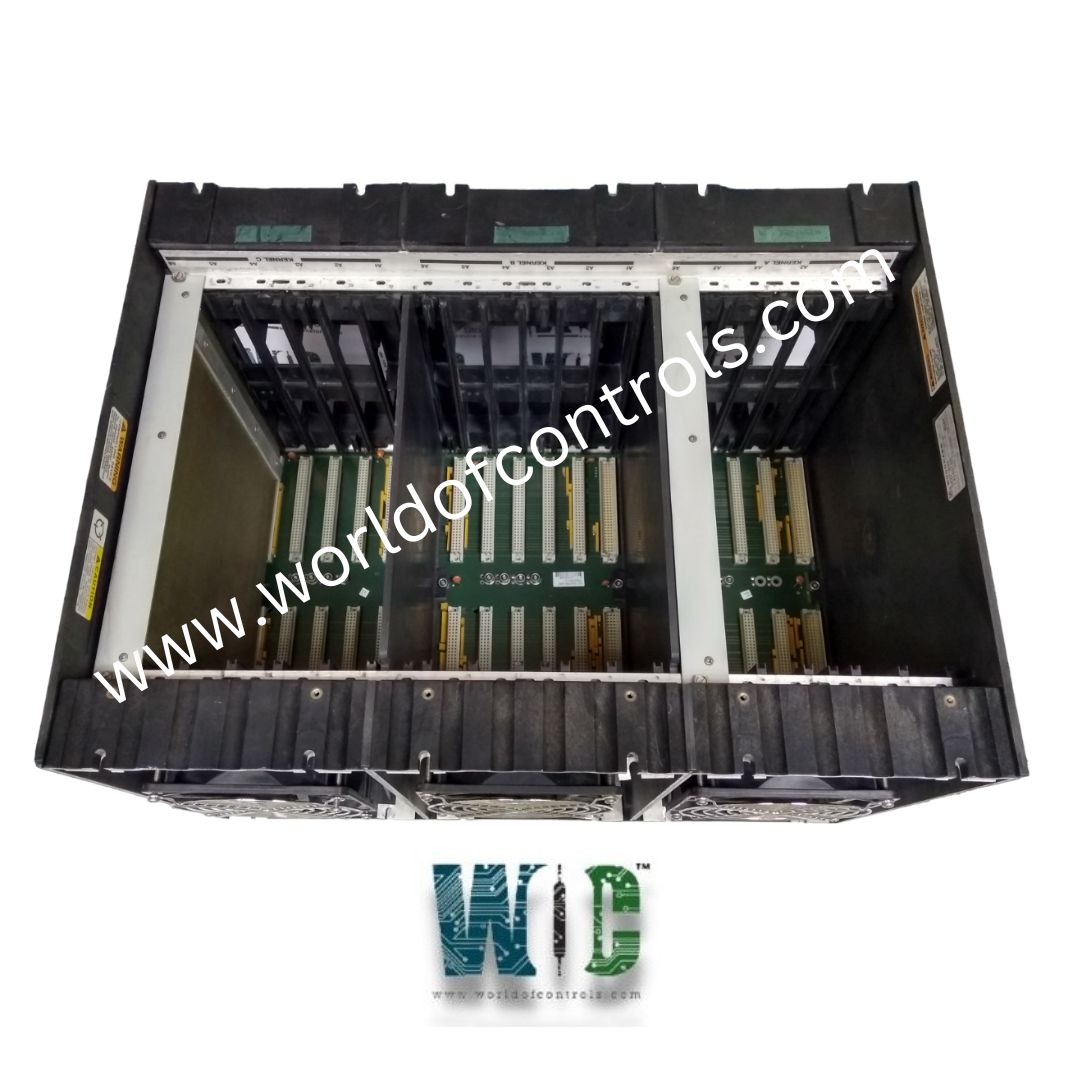
World Of Controls understands the criticality of your requirement and works towards reducing the lead time as much as possible.
5437-839 - Triple Modular Redundant Chassis is available in stock which ships the same day.
5437-839 - Triple Modular Redundant Chassis comes in UNUSED as well as REBUILT condition.
To avail our best deals for 5437-839 - Triple Modular Redundant Chassis, contact us and we will get back to you within 24 hours.
Part Number: 5437-839
Manufacturer: Woodward
Product type: Triple Modular Redundant Chassis
Availability: In Stock
Country of Manufacture: United States (USA)
5437-839 is a Triple Modular Redundant Chassis developed by Woodward. TMR Main Chassis, whether employing TMR040 or TMR5200 CPUs, features a pivotal configuration wherein I/O modules are intrinsically tied to a particular Kernel. This design approach ensures that if a Kernel experiences a failure, the associated I/O modules are immediately identified as failed as well. This strategy not only contributes to the system's resilience but also simplifies troubleshooting and maintenance by providing clear indicators of impacted components.
World of Controls has the most comprehensive selection of GE and Woodward components. Our professionals are available to help you with your requirements at any time. If you require any additional information, please contact WOC immediately.
What is 5437-839?
It is an MicroNet Triple Modular Redundant Chassis developed by Woodward.
What is the purpose of the Redundant Trunk Network (RTN) in expanding the TMR5200 processor-based system?
RTN networks facilitate the expansion of TMR5200 processor-based systems by allowing up to three I/O chassis, granting each CPU access to expanded I/O resources while treating I/O in the expansion chassis as shared resources.
How does the approach to expanding the TMR system differ with TMR040 processors?
With TMR040 processors, expansion involves utilizing Transceiver modules and copper or fiber cables to establish connections between multiple chassis. The I/O in this setup is dedicated to specific CPUs.
How do these various configurations contribute to the adaptability of TMR systems?
The TMR Main chassis and its associated configurations provide flexibility, enabling TMR systems to adapt to different operational requirements and expand their capabilities while maintaining reliability and communication integrity.